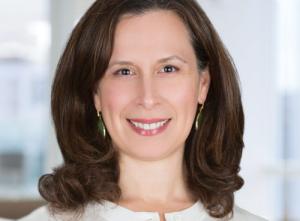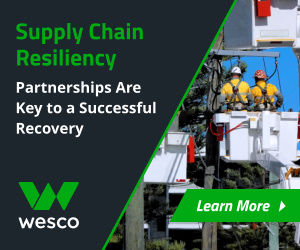Sempra
Lisa Alexander is senior vice president of corporate affairs and chief sustainability officer for Sempra.
How do today's natural gas utilities find the right balance, rigorously addressing ESG priorities while continuing to meet the needs of the communities they serve via gas utility service? In the conversations below, leaders from CenterPoint Energy, Eversource, NiSource, NW Natural, and Sempra Energy (both at San Diego Gas & Electric and at the parent) take on directly how they are managing that balance.

PUF: What are Sempra's views on the infrastructure that will be needed to advance the clean energy transition?
Lisa Alexander: Every day the Sempra family of companies delivers energy to thirty-six million consumers in North America — more Americans than any other utility holding company in the country. There is no off switch for us. We work to deliver safe, reliable, and affordable energy twenty-four hours a day, three hundred sixty-five days a year.
Sempra serves some of the world's most attractive and high growth markets, including California, Texas, Mexico, and LNG export markets. Our transmission and distribution infrastructure footprint gives us both a macro and micro view of the energy systems of today and what will be needed to create the net-zero energy systems of tomorrow.
Our robust capital plan centers on safety, reliability, and energy transition initiatives at our U.S. utilities. At Sempra, we believe three key capabilities underpin the energy transition and build resiliency. We refer to them as the 3Ds — decarbonization, diversification and digitalization — and our capital program supports investments in these key areas.
Our U.S. utility businesses — anchored by a growing rate base — are driving innovation in areas such as hydrogen research and development, RNG, and electric vehicle infrastructure, all while furthering the use of renewable energy by our customers.
Over seventy percent of our utility rate base is dedicated to electrification. That includes our ownership of Texas' largest electric transmission and distribution system that underpins one of the top renewables penetration rates in the country.
San Diego Gas & Electric, one of our California utilities, exceeds the national average for renewable power and is a leader in advancing electric vehicle infrastructure with sixty thousand EVs and seven thousand five hundred chargers in its service territory. We are also on the forefront of wildfire safety innovations and climate adaptation.
We believe our energy systems will experience more change in the next twenty years than we saw in the last one hundred years. This change isn't something we back away from. We believe Sempra has a leadership role to play and we're excited about what the future holds.
PUF: This year, Sempra announced the launch of its Sustainable Financing Framework. How does that influence Sempra's investment decisions?
Lisa Alexander: Yes, in August, we launched our Sustainable Financing Framework, which allows alignment of our financing with our environmental, social, and governance strategy.
Proceeds from a financing under the framework, which applies to Sempra and its two California utilities, will be used for investments that provide environmental or social benefits, such as clean transportation, climate change adaptation, energy efficiency, green buildings, pollution prevention and control, and socio-economic advancement.
For a company like Sempra, sustainability is about creating long-term sustainable value for our shareholders and other stakeholders. Many companies are only beginning their sustainability journey.
For Sempra, this multi-stakeholder view and long-term sustainable value creation isn't new. Our deep roots in the regulated California-utility markets have allowed us, since our inception, to manage environmental, social and governance risks and opportunities as part of our business.
This climate-centered business strategy drives value for our shareholders. We have a track record of delivering strong financial results and achieving or exceeding our financial targets. This year we increased our common stock dividend for the eleventh year in a row.
Our management team has a real willingness to evolve our portfolio to maintain a leadership position in working to decarbonize the markets we serve. We continue to see the financial benefits of our disciplined strategy and strong execution across our businesses.
PUF: You also announced a net-zero goal earlier this year. Can you share more about the ESG strategies supporting this goal?
Lisa Alexander: Earlier this year we launched our thirteenth corporate sustainability report and in it we lay out our enterprise-wide goal of net-zero GHG emissions for Scopes 1, 2, and 3 by 2050, and our ambitious interim goals to mark progress along the way.
I encourage everyone to read our report, which shares how our sustainability strategy is anchored under four key pillars of: enabling the energy transition; driving resilient operations; achieving world-class safety; and championing people.
Our California utilities are already making impressive progress toward their own interim goals. Some of those goals include delivering sixty percent renewable or zero-carbon energy to California electric consumers by 2030 at SDG&E and delivering twenty percent RNG to core customers by 2030 at SoCalGas.
We're focused on bringing new low- to zero-carbon fuel choices to markets we serve and supporting electrification with investments in transmission and distribution infrastructure that connects renewable energy production areas to consumers.
Sempra understands that being a leader in climate change includes measuring and reducing emissions across the energy value chain. That is why we are committing to the goal of achieving net-zero GHG emissions across all scopes by 2050.
PUF: What's your role in these initiatives?
Lisa Alexander: Together with leaders in operations, business development, finance, and other disciplines, I help look at the strategic direction of our company and set priorities through an ESG lens. I also meet with investors and other stakeholders to share how our ESG approach drives long-term, sustainable value.
Climate really is central to our business. Our employees care deeply about ESG performance, and I love the spirit of continuous improvement demonstrated across our companies — from California to Texas, Mexico, and beyond — as we all work toward net-zero.
I'm proud of Sempra's strong ESG track record. We're the only North American utility company on the Dow Jones Sustainability World Index; we've been named a World's Most Admired Company by a top financial magazine for several years, and we have a slew of awards from the Human Rights Council and others for our strong diversity and inclusion performance.
We've been committed to sustainability before the phrase, energy transition, dominated headlines. Sempra exited coal in the early 2000s. We were a founding member of Energy STAR.
Sustainability is in our DNA. We recognize that climate challenges pose risks to the health, safety, and prosperity of billions around the globe, and we're eager to do our part to improve lives and advance a net-zero future for all.
PUF: What's most rewarding to you from this work?
Lisa Alexander: I love tackling challenges and finding solutions where others see obstacles. Right now, there's no greater challenge than addressing climate change.
Sempra powers the lives of more Americans than any other utility holding company in the country and that gives us tremendous opportunity to make a difference by improving access to increasingly clean, reliable, and affordable energy.
Let me take a moment to emphasize the human element in this discussion. Around the world, populations are surging in developing nations — places that currently burn biomass and other highly polluting fuels.
There are also communities around the world where people simply don't have access to energy; they live in energy poverty. Companies like Sempra have a leadership role to play in expanding energy access, diversity, and reliability by bringing cleaner energy where it is needed most, which we do through our LNG export business and our infrastructure in Mexico.
Here in the U.S., we also have a leadership role to play. We are a leader in our industry in efforts to expand transmission and distribution networks and advance technologies to help lead us to a net-zero future while maintaining reliability and resiliency in the face of climate change.
And throughout all the industry change ahead, affordability needs to remain an important factor in decision making. Did you know forty percent of Californians are on subsidized energy programs? Even in one of the most prosperous nations on earth, some people still struggle with access to reliable, affordable energy.
In the coming years, we expect dramatic change in our energy systems. I find it incredibly rewarding to be part of a company that is tackling these challenges head-on with a focus on advancing a net-zero future for all.
ESG Naturally conversations:



